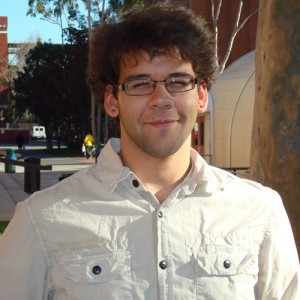Major and Classification
Physics
Faculty Mentor
- Edward Rhodes, Ph.D.
Department
- Physics/Astronomy
McNair Project
Abstract
The mechanism of the sun’s magnetic activity cycle is one of the major questions that have persisted in solar astronomy for the past three decades. It is believed that by studying structural properties of the sun such as the activity cycle, we will be able to make important advances in understanding the solar interior and solar evolution that can then be applied to other more distant stars. In this project, the author will use a global helioseismic approach to examine width, asymmetry, amplitude and frequency parameter shifts of high degree and high frequency pressure modes within the sun and compare them to corresponding changes in the level of solar activity for the year 2001. The data used consists of three-day time series power spectra generated by a another group at the University of Southern California and initially collected by the Global Oscillation Network Group. This network consists of six identical telescopes positioned around the world in order to maximize the continuity of solar observations and decrease down time. These power spectra were then renormalized, averaged with respect to the azimuthal order m, and fit to both symmetric and asymmetric theoretical profiles. Differences in frequency, width, amplitude and the asymmetry parameters are compared to computed activity differences using a linear regression. Understanding how different mode parameters change with solar cycle is paramount to furthering our knowledge of the solar cycle, and of stellar evolution and structure in general, just as other similar examinations and inversions of pressure modes have lead to recent discoveries regarding internal solar structure and processes that are now known as the hallmarks of Helioseismology.
